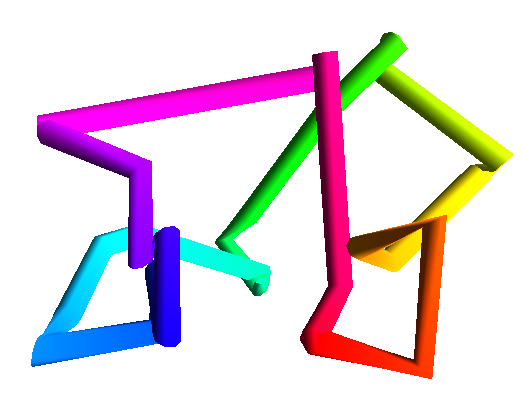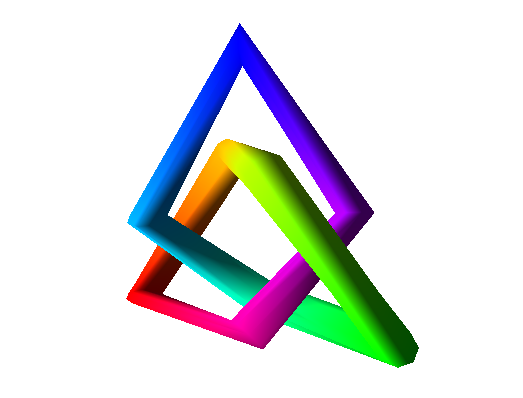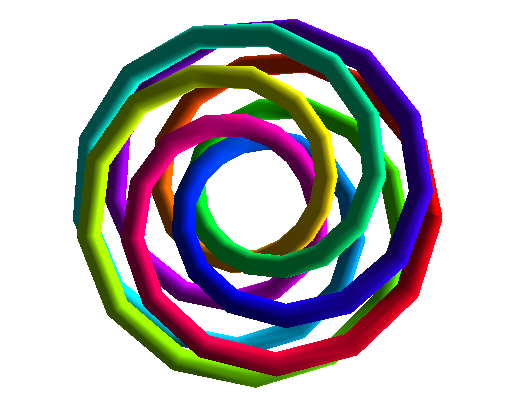Space curve analysis¶

This module contains classes and functions for working with knots and links as three-dimensional space curves, or calling functions elsewhere in pyknotid to perform topological analysis. Functionality includes manipulating knots/links via translation, rotation and scaling, plotting diagrams, finding crossings and identifying knots.
Different knot classes¶
pyknotid includes the following classes for topological calculation:
- SpaceCurve: Provides functions for calculations on a single curve, including plotting, some geometrical properties and finding crossings in projection.
- Knot: Provides functions for topological calculations on a single curve, such as the Alexander polynomial or Vassiliev invariants.
- OpenKnot: Provides functions for topological calculations on an open curve that does not form a closed loop. Open curves are topologically trivial from a mathematical perspective, but can be analysed in terms of the topology of different closures.
- Link: Provides the same interface to collections of multiple curves, and can calculate linking invariants.
- PeriodicCell: Provides some convenience functions for managing collections of curves in periodic boundaries.
Creating space curves¶
The space curve classes are specified via N by 3 arrays of points in three dimensions, representing a piecewise linear curve.
For instance, the following code produces and plots a
Knot from a set of manually
specified points:
import numpy as np
from pyknotid.spacecurves import Knot
points = np.array([[9.0, 0.0, 0.0],
[0.781, 4.43, 2.6],
[-4.23, 1.54, -2.6],
[-4.5, -7.79, -7.35e-16],
[3.45, -2.89, 2.6],
[3.45, 2.89, -2.6],
[-4.5, 7.79, 0.0],
[-4.23, -1.54, 2.6],
[0.781, -4.43, -2.6]])
k = Knot(points)
k.plot()

The pyknotid.make module provides functions for creating many types of example knots, such as torus knots or some specific knot types:
import numpy as np
from pyknotid.make import torus_knot
k = torus_knot(7, 4)
k.plot()
